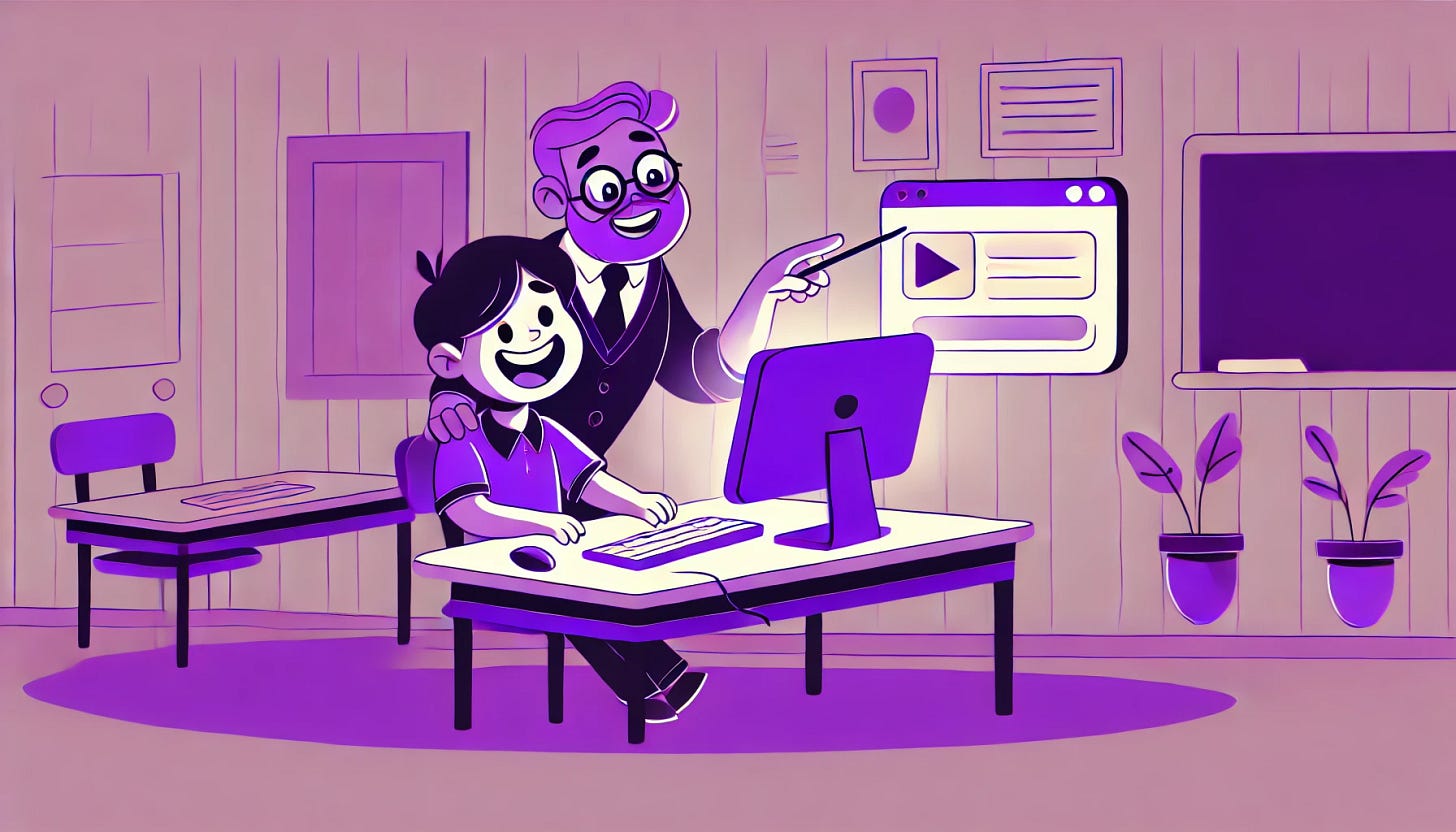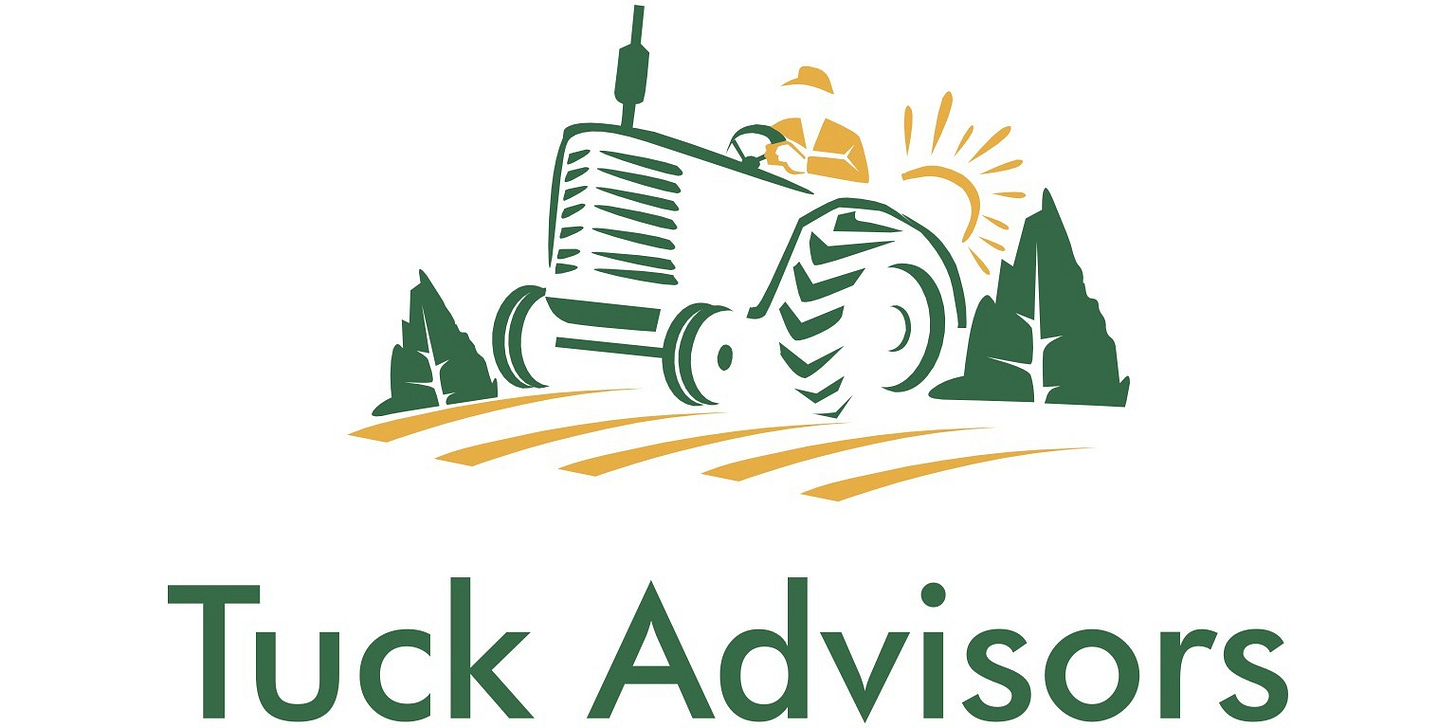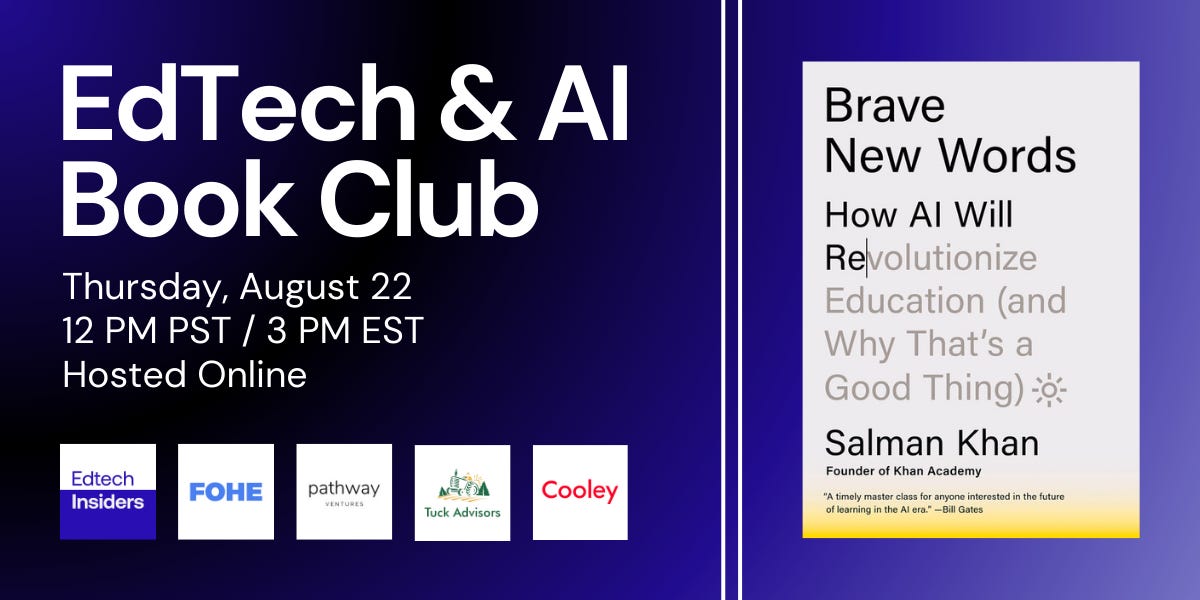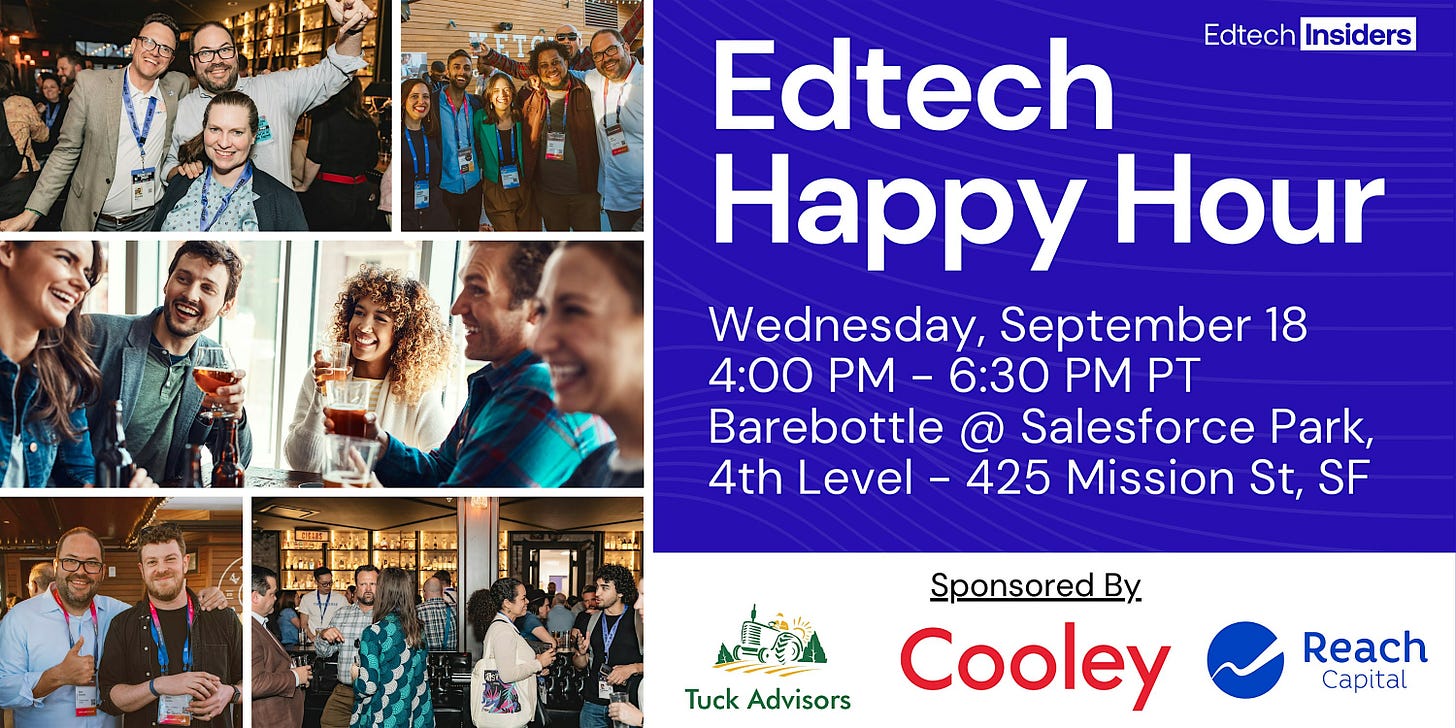Defining "Student Safe AI" Before Moral Panic Sets In
Upcoming Edtech Insiders events, an interview with Kevin Leem of Mathspresso, and more!
🚨 Follow us on LinkedIn to be the first to know about new events and content! 🚨
Defining "Student Safe AI" Before Moral Panic Sets In
By Alex Sarlin
A moral panic is “a widespread fear that a person, group, or thing is a threat to society's values, interests, or well-being.” It’s a term that’s sporadically used to highlight (and, some argue, minimize) strong social reactions, especially those that truly sweep across the cultural landscape, cross political boundaries, and result in new government policies and regulations. Some famous moral panics of the 20th century include the mass revolts in the 1950’s against rock and roll music and comic books, or in the 1990’s against rap music.
An important subset of “moral panic” is “techno-moral panic” – a moral panic in response to technology. In a terrific and newly relevant NY Times piece, technology columnist John Herman chronicles a series of moral panics based in internet technology, from cyberporn to video gaming to disinformation (aka “Fake News”):
“The July 3, 1995, cover of Time Magazine featured, below the glowing face of an awe-struck child, a blaring, bold-type neologism that needed no explanation: “Cyberporn.” “A new study shows how pervasive and wild it really is,” read the cover line. “Can we protect our kids — and free speech?”…In the coming years, as most of America got online, some variation on the cyberporn cycle would repeat almost continuously: about chat-room child predators; about online games; about the emergence of social media; about sexting and the apps that seemed designed to make it easier.”

One recent (and probably long overdue) techno-moral panic is about the effects of social media on teenagers, which led to the US Surgeon General calling for a “warning label” for the technology and has already resulted in new regulations on social media providers at both the federal and state levels. These laws revisit the notorious Section 230 of the 1996 Communications Decency Act, which absolved social media and platform providers of responsibility for any content posted on their sites, sewing chaos and discord (pun intended) ever since.
Moral Panic around AI is Imminent as Usage Rises
It’s been almost two years since the world took note of ChatGPT 3.0’s open interface, the meteoric moment that welcomed the age of Generative AI. After much excitement and enthusiasm from tech and education circles, and a positive reaction in school policies in the summer of 2023, the drumbeat of moral panic in relation to AI and school is now starting to pound regularly. Recent headlines include:
Teen Girls Confront an Epidemic of Deepfake Nudes in Schools
Most Teens Think AI Won’t Hurt Their Mental Health. Teachers Disagree
Moral panics historically center on protecting young people from the negative effects of new and rapidly growing cultural phenomena to which they are attracted (rock and roll, comics, violent video games, Tide Pods, TikTok). AI is quickly becoming one of these rapidly growing technologies.
An estimated 230 million people used AI apps in June 2024 alone, per Business of Apps. And, while survey data is incredibly varied, one recent study from Impact Research and Walton Family Foundation found that almost 50% of K-12 and undergraduate respondents are already using chatbots at least once a week at school and at home.

The Double-Edged Sword of Tech Empowerment
Like the internet or mobile phones, AI provides immense technological power to users, including young users. The internet empowered users to instantly store, access, and share information and to connect with others regardless of physical distance. Generative AI arguably goes further. It empowers us to make anything we can imagine into digital reality: stories, images, music, movies, inventions, games, and even new “people.” It allows us to instantly translate any written, spoken, or sung language. It gives us an unimaginably brilliant partner to brainstorm or collaborate with on anything we’d like to achieve.
IMHO, the usage numbers above, already incredible for a technology only two years old, are poised to skyrocket as we move from the “text, voice, and images” era to the “videos, games, and characters” era of AI.
The internet has had huge negative externalities, including disinformation, political polarization, cyberbullying, and phishing. Like any major new technology, AI will certainly have it’s own set of side effects: deepfake content, misinformation, predatory economic practices, and perhaps the loss (or, at least, change) of millions of jobs to name just a few impacts we can already see and predict.
Blacklists and Whitelists
If half of students are using AI on a weekly basis, there is a desperate need for a type of AI that is safe and appropriate for students (let’s focus on 13 and older, for now). This student-safe AI must be available at home and in educational or school environments, and it should be developed before any of the moral panics take flight.
Keep in mind, all moral panics aside, that as of 2024 students do use the internet in schools. Schools and universities have addressed the student-safe internet issue through the creation of technical firewalls that allow a set of blacklisted sites that can’t be accessed and/or whitelisted sites that can be accessed. These may be individual websites or entire categories, and sometimes search sites themselves are restricted, which clearly limits both the utility and the risk of internet access.
If history serves, the same mentality could apply to AI: there could be blacklisted tools and apps and whitelisted tools and apps. In our interview with academic integrity provider Honorlock, they noted the long and growing list of tools that students are using to bypass integrity tooling, all of which are then blacklisted by school systems.
Blacklisting and whitelisting are clearly two sides of the same coin, but most AI education proponents should probably be championing a world in which blacklisting is the more common strategy… because that should mean that the majority of AI products are accessible.
Whether we are in for a blacklist or a whitelisted future (or, likely, both), we surely need to know what criteria should put any given AI tool in each category.
Currently, there are two major obstacles to this goal:
No one has defined (or agreed upon) what “safe and appropriate” truly means in educational contexts for AI
No one fully knows what AI models will and won’t do in response to user requests, often including the creators of the systems themselves
What Are We Doing Now?
There are a few strategies that have already emerged in response to these obstacles:
Strategy 1: Whitelisting and Relying on Third-Party Guardrails
The general purpose foundational models on which most AI applications are created (OpenAI’s GPT, Anthropic’s Claude, Google’s Gemini, Meta’s LLaMa, Mistral’s Nemo) all have their own “guardrails” for what they will or won’t create for users. They may add additional guardrails for their education specific applications (like ChatGPT Edu, Google’s LearnLM). Then, individual applications have the option to add additional guardrails (or remove existing ones), further tailoring usage.
The fact that an AI’s response is relying on a large set of different inputs (the original training data, the foundational model guardrails, any additional education or app-specific guardrails, provocations entered by the user), none of which are truly understood by education decision makers, makes this an implausible long-term strategy.
Strategy 2: Restricting Student Input to AI Tools
Another tactic is to limit students’ AI usage to very specific purposes, such as getting hints on a math problem, choosing the character to feature in a story, or translating a provided reading into a different reading level or language. These are highly useful features, but, just as keeping students away from search engines and address bars severely limits the usefulness of the internet, restricting students from entering their own text (or voice, or images, or video) into an LLM limits its use considerably.
Strategy 3: Keeping the Educator in the Loop
Another popular strategy is to design AI tools directly for educators, or at least to ensure that educators are always ‘in the loop’, meaning they have the chance to review any AI-generated content before it is exposed to students. This is clearly a noble and eminently reasonable strategy; it keeps the educator centered while relying on their expertise and intuition to protect students from harm. It also essentially shifts much of the responsibility (and blame) from the edtech tool and LLM companies onto the educators, bottlenecks student usage and response time (imagine a classroom of students requesting help from an AI chatbot, and the teacher having to ‘ok’ each response in real time), and demands educator buy-in and training.
Strategy 4: Monitored Walled Gardens
A number of AI edtech companies are working to create supervised AI environments that actively monitor student behavior: chat windows that watch and report whether students copy and paste answers from a third party, open new browser windows, install third party browser extensions, or spend too little time on an assignment (any of which might indicate cheating). Personally, I find this type of arms race futile and demoralizing, and it certainly doesn’t encourage the type of creative and open usage of AI tools that AI advocates envision.
So if these strategies probably won’t get us to a world in which students can leverage AI’s power in school environments… what might?
A Benchmark for “Student-Safe” AI
When you read that a new AI Model, say, Claude Sonnet 3.5 “outperforms” previous models, what does that really mean? Usually, it means that it surpasses them on specific AI benchmarks, assessments designed explicitly to test the capabilities of LLMs.
In the chart below from Stanford’s 2024 AI Index, notice that each category of performance is based on a different benchmark assessment, usually an acronym (like GLUE, General Language Understanding Evaluation). For example, the pink line – the Multitask language understanding (MMLU) benchmark – was developed by UC Berkeley CS PhD students and professors. It contains 16,000 multiple-choice questions across 57 academic subjects, and has been downloaded over 100 million times in four years.
The MMLU benchmark has a set of ‘scenarios’ (in this case, test questions and their hidden answers) and existing datasets about how humans behave in each category. The MMLU benchmark can then evaluate how well any given model does against both humans and other LLMs, overall and even within each subject. This generates leaderboards like the one below, which explains that, on the task of answering High School Chemistry questions, Anthropic’s Claude 3.5 Sonnet outperforms Meta’s LLaMa, Google’s Gemini 1.5 Pro, and OpenAI’s GPT 4.0
What if we were to build a new benchmark assessment to test core elements of a student-safe AI experience? If we were to generate a set of scenarios (student prompts), inferences (expert answers), and teacher-evaluated data sets around important criteria like “bullying” what would this look like? (e.g., given 5,000 real student prompts designed to provoke an LLM model into generating text or images that would facilitate bullying behavior, how many does the model respond to appropriately, that is, using the same heuristics a professional human would?)
This benchmark could be applied directly to foundational models (like GPT4o) or to their fine-tuned implementation inside edtech tools (for example, MagicSchool.ai’s Student Chatbot).
Personally, other ‘school-safe’ categories might include:
Age-appropriate responses (for each age)
Response to solicitations of self-harm or suicide
Response to solicitations of violence
Response to requests of toxic language or profanity
Attempts to circumvent academic integrity
Responses to the entering or request of private information
Responses to requests for sexual or pornographic content
And so on and so on… the prompts should be generated by real learners and the “correct” answers evaluated by educators, child psychologists, counselors, and other human experts.
This type of benchmark could evaluate any new tool or model, and be expanded into the generation of images and videos. It could be updated to accommodate new categories (for example, in the near future, AI chatbots may act in ways that cause students to become overly emotionally attached or dependent to them). It could lead to a student-safe certification that may even be written into law or procurement policy.
This is a modest proposal because it is surely full of logical holes and feasibility issues – and I do want to know which ones you are thinking about right now. That said, it’s the type of project that could, if executed correctly, elevate and codify the expertise of professional educators, push tech companies to address student safety (especially in education targeted models like Google’s LearnLM), and unleash the full power of student creativity and academic curiosity. Worth a thought.
This edition of the Edtech Insiders Newsletter is sponsored by Tuck Advisors.
Since 2017, Tuck Advisors has been a trusted name in Education M&A. Founded by serial entrepreneurs with over 25 years of experience founding, investing in, and selling companies, we believe you deserve M&A advisors who work as hard as you do. Are you a founder thinking of selling your company? Have you received any UFO’s (unsolicited flattering offers) and need help determining if they’re real or hoaxes? We can help! Reach out to us at confidential@tuckadvisors.com.
Edtech Insiders Events
EdTech & AI Book Club
Edtech Insiders is collaborating with Future of Higher Education and Pathway Ventures, as well as our sponsors Tuck Advisors and Cooley to launch our first EdTech & AI Book Club on August 22!
Together we'll discuss Sal Khan’s newest book Brave New Words: How AI Will Revolutionize Education (and Why That’s a Good Thing). And, we may have a very special guest joining to kickoff our time together! ;)
We have just a few spots left for this event. If you can’t make it to this one, keep your eyes peeled for our next Book Club!
Bay Area Edtech Happy Hour
Our next Bay Area Edtech Happy Hour will be held at the Salesforce Park in San Francisco on September 18! Join Edtech Insiders, Tuck Advisors, and Cooley to connect, collaborate, and enjoy a drink together!
We’d love to see you there, please RSVP if you plan to attend!
Copenhagen Edtech Meetup
Emerge VC, in conjunction with Antler, are hosting an edtech / future of work meetup in Copenhagen on Wednesday, September 11! The event is designed for founders and investors interested in the space.
Learn more and RSVP at the link!
Top Edtech Headlines
1. Google Launches Gemini Live
Google's Gemini Live allows users to engage in natural, two-way voice conversations with an AI bot, competing with OpenAI’s Advanced Voice Mode on ChatGPT.
2. H1 2024 - What Got Funded in Edtech?
In the first half of 2024, the edtech sector saw significant funding, with $1.5 billion invested globally across 402 deals. Key trends included a strong emphasis on AI and machine learning, particularly in adaptive learning platforms and AI co-pilots.
3. California and NVIDIA Partner to Bring AI to Schools and Workplaces
California has partnered with NVIDIA to integrate AI into education and workforce development across the state. This collaboration will enhance AI education in community colleges and develop industry-aligned curricula, aiming to prepare students and professionals for AI-driven industries. The initiative underscores California's commitment to leading the AI revolution while ensuring that AI skills are accessible to diverse and underserved populations.
4. Communities Demand Transparency After Ed, LAUSD’s AI Chatbot, Fails
The Los Angeles Unified School District's AI chatbot, Ed, faced significant challenges, leading to its revocation and now sparking demands for transparency from parents, teachers, and experts. The community is concerned about the decision-making process and outcomes in one of the first large-scale case studies on AI going awry in a school district.
5. Colorado Schools Go All in on AI This fall
Colorado schools are increasingly integrating AI into classrooms, focusing on preparing students for an AI-driven future. The state is exploring AI tools for personalized learning and administrative efficiency while addressing concerns about data privacy and equitable access. This initiative is part of a broader effort to ensure students and educators are equipped with the skills needed to navigate and thrive in an AI-enhanced educational landscape.
Join Edtech Insiders+
If you love Edtech Insiders and want to continue to support our work, consider becoming a paid subscriber! By joining Edtech Insiders+ you receive:
Early access to all Edtech Insiders events. No more sprinting to sign up for our monthly happy hours, edtech summits, and online conferences.
Access to our exclusive WhatsApp channel to connect with the Edtech Insiders community and discuss the latest trends and news in our space.
All proceeds from subscriptions will help us invest in our podcast, newsletter, events, and community. Our goal is to make Edtech Insiders an enduring and sustainable community offering that connects the edtech ecosystem!
We would be so excited if you decide to join us as a member of Edtech Insiders+.
Interview: Kevin Leem of Mathspresso
We have had some amazing guests on The Edtech Insiders Podcast in the last few weeks. One of our stand-out interviews from this past week is Kevin Leem, the CFO of Mathpresso, operator of the globally recognized AI-powered learning platform, QANDA.
Here’s a deep dive on our interview with Kevin, and we encourage you to give the full episode a listen for more!
The Origins of QANDA and Addressing Educational Inequality in South Korea
During our time together, Kevin discussed how QANDA originated from the educational disparities between urban and rural areas in South Korea. Due to the intense competition to get into prestigious universities, many students in rural areas struggled to access quality tutors compared to their peers in Seoul. This drove the co-founders to create QANDA, an AI-powered platform to connect students with tutors and make high-quality education more accessible.
"Ray, one of our co-founders, started working as a private tutor to pay for college tuition and realized the stark difference in educational resources between Seoul and rural areas. This experience led to the idea of QANDA, a platform that connects students with high-quality tutors regardless of their location, aiming to reduce financial and geographical disparities in education." - Kevin Leem
Evolution of QANDA to AI-Driven Platform
Initially, QANDA was a simple Q&A platform, but it evolved into an AI-driven image search tool that helps students find solutions by taking photos of their questions. The platform utilizes OCR and deep learning to provide instant answers, making it more efficient and scalable.
"We realized that a pure matching platform wasn't sustainable. So, we pivoted to an image-based search platform using AI. Now, students can take a photo of their question, and our deep learning technology finds the best match from our database, providing instant solutions." - Kevin Leem
The Global Impact of QANDA
Kevin highlighted the global reach of QANDA, including its impact on reducing educational inequalities in countries like Vietnam and Thailand. The platform has not only helped students but also gained positive feedback from teachers who use it to bridge learning gaps in their classrooms.
"In Vietnam, a student no longer has to commute 20 miles to attend a private academy because QANDA provides personalized education at home. Similarly, in Thailand, QANDA quickly gained popularity as it made high-quality education accessible to all students, not just the wealthy." -Kevin Leem
Introduction of QANDA’s U.S. Product, KramaFi
QANDA recently launched KramaFi, a generative AI-based study tool aimed at U.S. college students. The app personalizes study guides and creates mock exams based on the student’s uploaded materials. Though initially focused on the U.S., KramaFi has already seen global adoption.
"KramaFi is our new generative AI native study tool for higher education. It provides personalized study guides, flashcards, and mock exams based on students' study materials, making it a powerful tool for exam and coursework prep." -Kevin Leem
Collaboration with Google and Future of EdTech
Kevin discussed the collaboration between Mathpresso and Google, emphasizing how Google’s support has been crucial in leveraging cloud services and AI technologies. He also highlights the future of EdTech, focusing on personalized AI tutors and the balance between AI and human interaction in education.
"Google has been one of our biggest supporters, from collaborating on Google Vision to using GCP cloud services. Their expertise in AI has helped us enhance QANDA and KramaFi, and their support continues to be invaluable as we expand globally." - Kevin Leem
Curious to Hear More?
You can listen to our full interview with Kevin Leem, as well as interviews with many other edtech founders, investors, and thought leaders at The Edtech Insiders Podcast! Check it out, and as always, we’d love to hear what you think!













